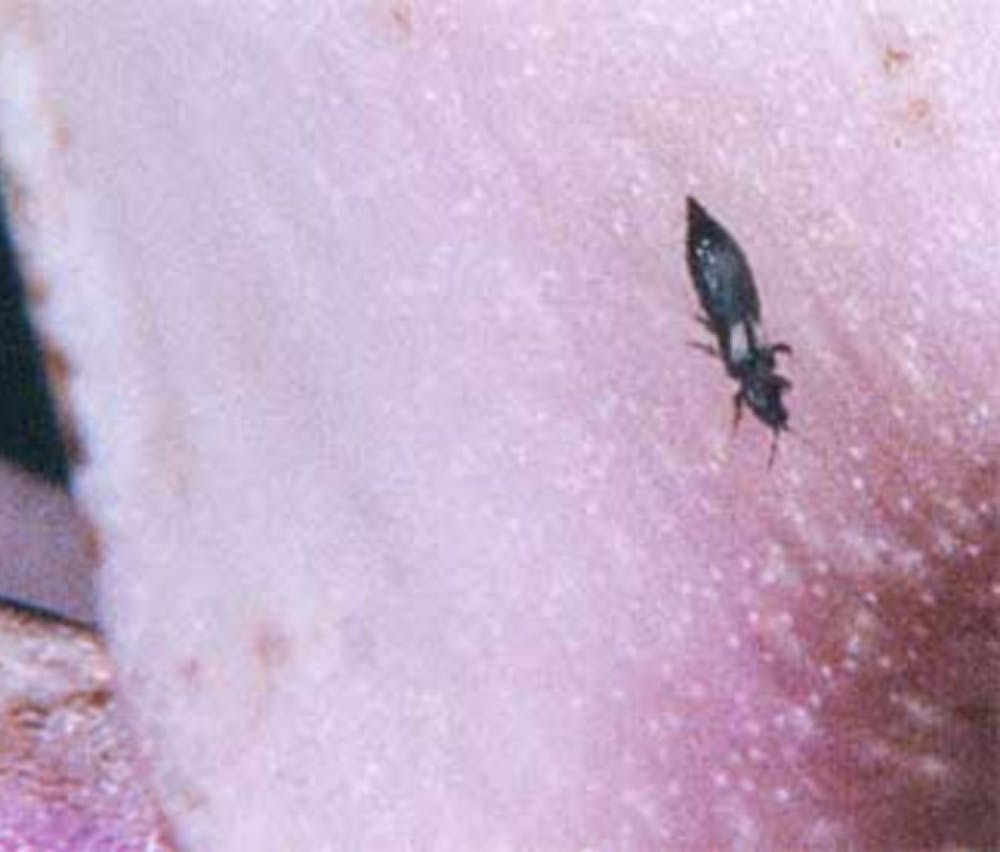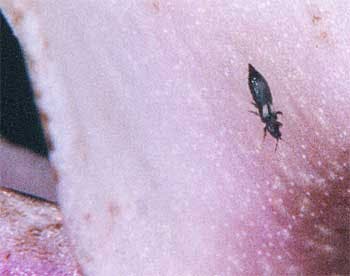
Thrips


Gallery


Additional Information
This leads to pale markings, like “CD scratches” on leaves and decimated, deformed flowers. This mode of feeding means that they are impervious to systemic insecticides, and must be treated with contact insecticides, or IGRs.
Occasionally, thrips can transmit disease from plant to plant, such as orchid viruses. Thrips move rather quickly, and can bend their bodies to hide in crevices, so it’s nigh impossible to simply hunt and crush them all. Thrips also leave behind little black dots of frass, as well as a varnish-like trail, both of which are excrement. Thrips are attracted to the colors yellow, white[1], and blue, and will hitch a ride on clothing, so shake your shirt off if moving between plant areas! Wearing black is a safe way to not encourage thrips to hitch a ride, and may contribute to your street cred[2].
Thrips can complete a lifecycle and start laying eggs in as little as two weeks. Thrips prefer to attack flower buds, but can attack any portion of the plant. Like any creature, they prefer an easy meal, so will go for the newest, thinnest tissues first.
For more information on Thrips, see:
- University of Florida Extension (great recommendations for greenhouse control)
https://edis.ifas.ufl.edu/publication/IN1145 - University of California Agriculture and Natural Resources (a great comprehensive guide
http://ipm.ucanr.edu/PMG/PESTNOTES/pn7429.html - Biological control for BOTH indoors and outdoors[3]!
https://www.arbico-organics.com/product/thrips-predator-mite-amblyseius-cucumeris-neoseiulus
Further Reading
[1] White also reflects yellow and blue, and the thrips perceive that.
[2] Results may vary
[3] The American Orchid Society does not endorse brands. But your author, Christopher Satch, does!
Removing Thrips
It is difficult to control thrips, because they are impervious/resistant to nearly all pesticides. Insecticidal soaps are somewhat effective, but need multiple applications. Interestingly, thrip control indoors is best left to predatory mites. Yes, the best way to control thrips in your home is to release Amblyseius cucumeris predatory mites across your entire collection! The best part is that the mites overwhelm the thrips and eat them all, then die off or leave when their thrippy food supply is exhausted. They are extra helpful because they also eat spider mites which also harm your orchids. The best part about releasing predatory mites indoors is that they are mites, so when they die off after purging your pest problem, they dry out and turn into dust (which is dust mites anyway, so who cares?). You will need a few rounds of mites, spaced a week apart for this to work.
You can also spray insecticidal soap to kill thrips, but this only works on the aboveground thrips. They do pupate in the soil, so treatment of the soil with another pesticide is recommended.

FREE ACCESS: Orchid DealWire
Get notified when orchid vendors have special promotions and exclusive savings.








